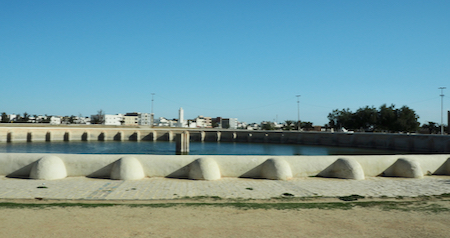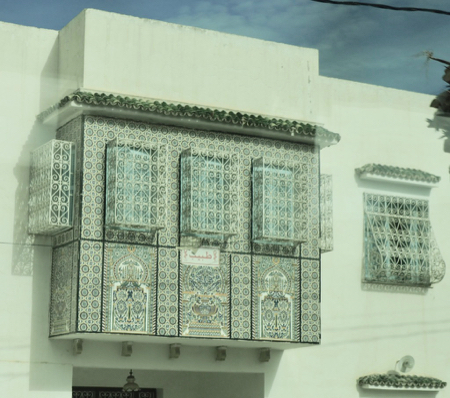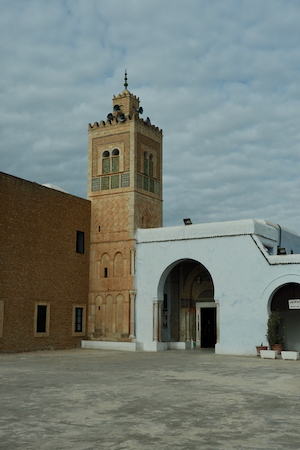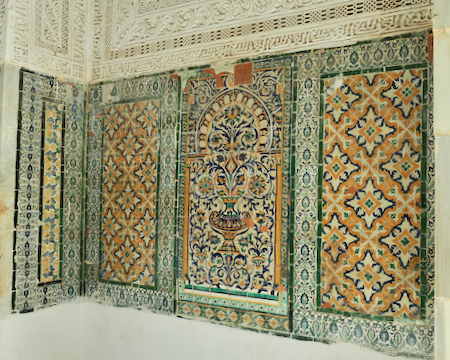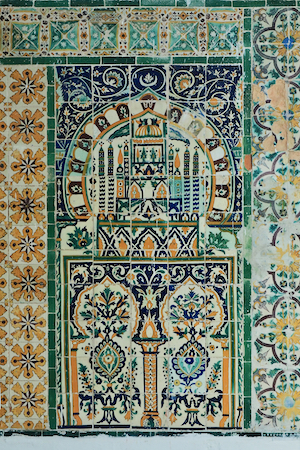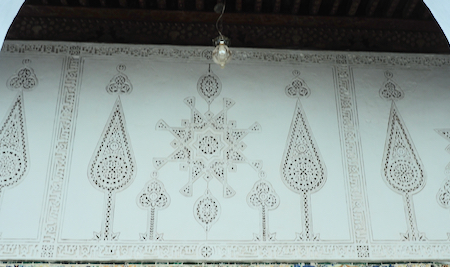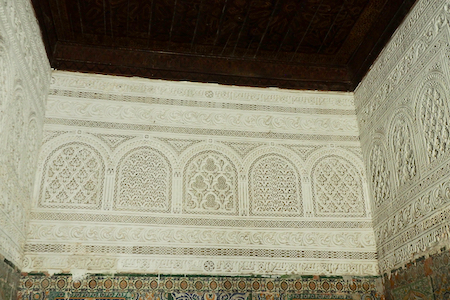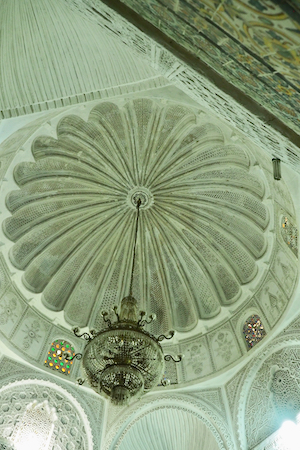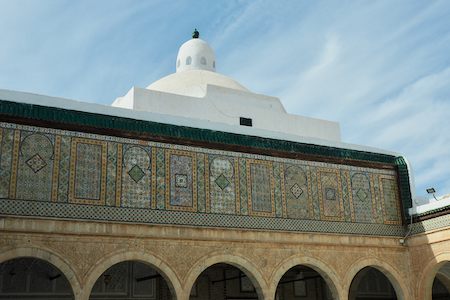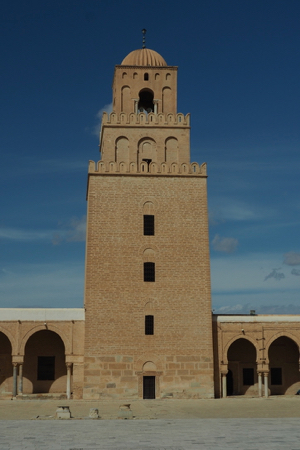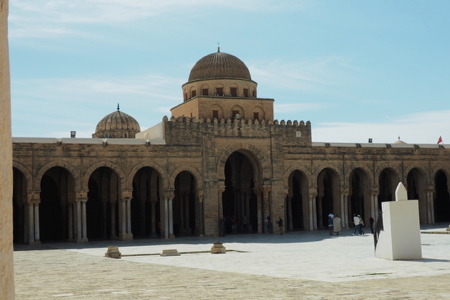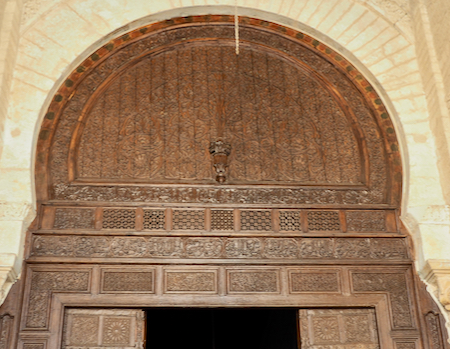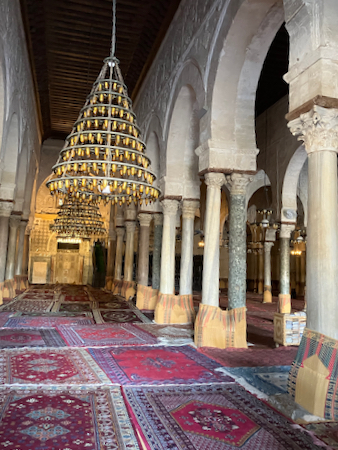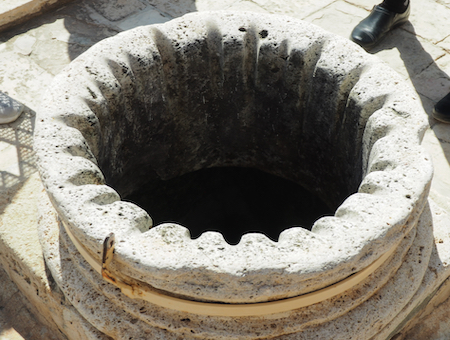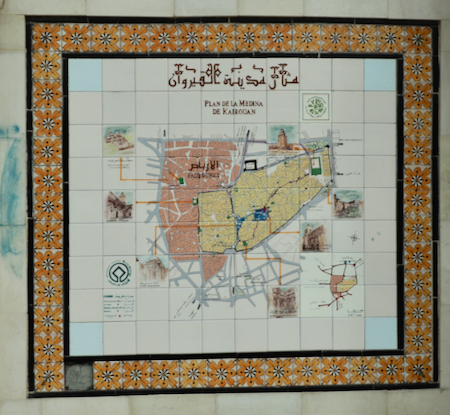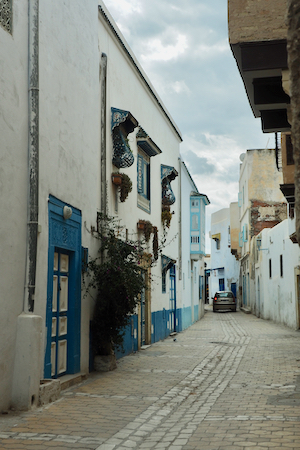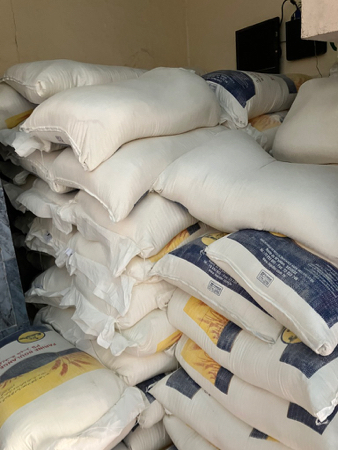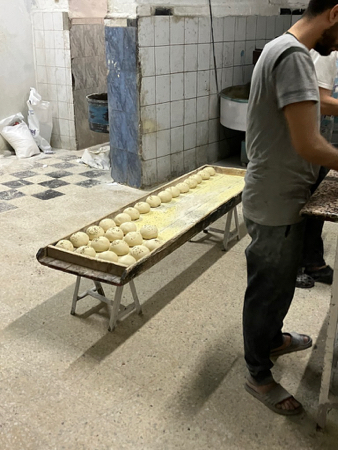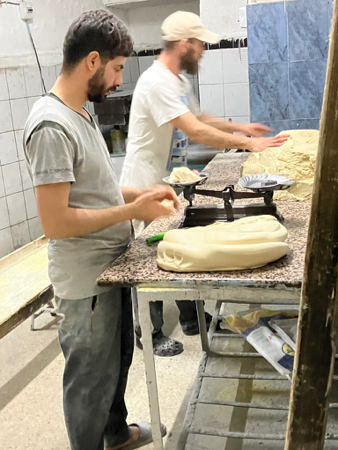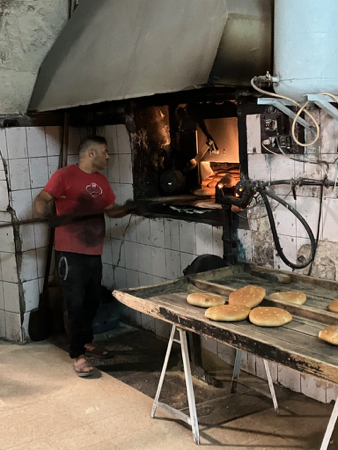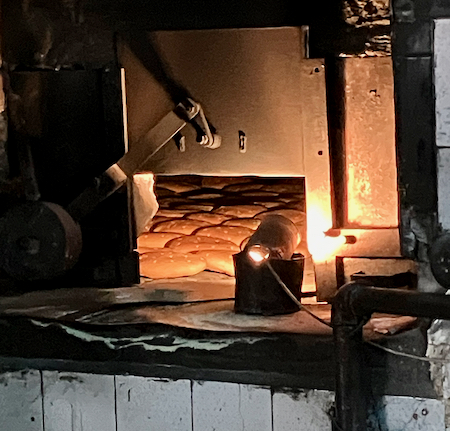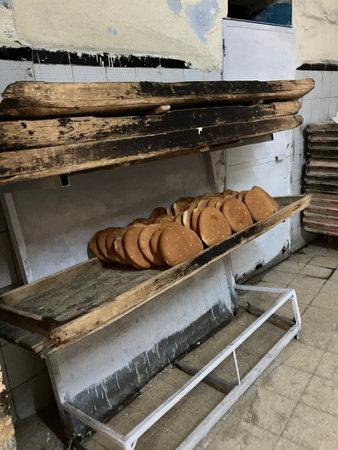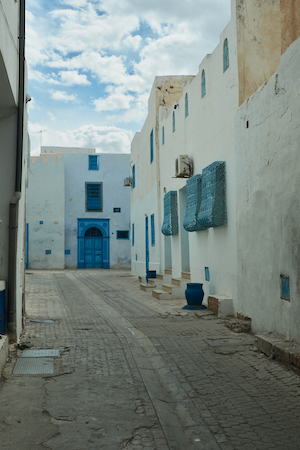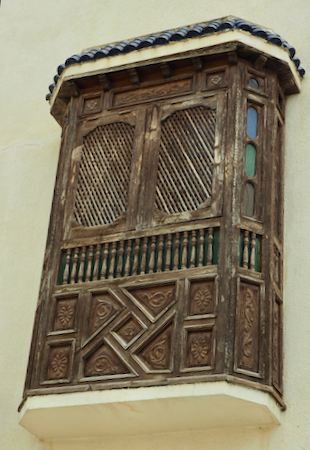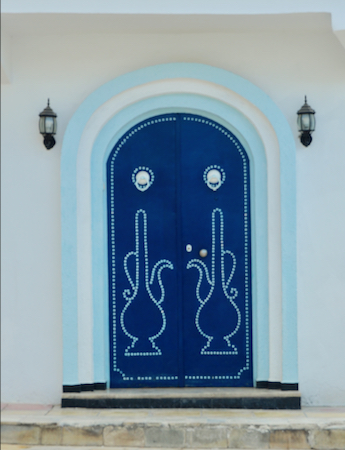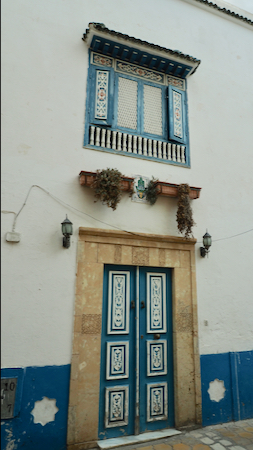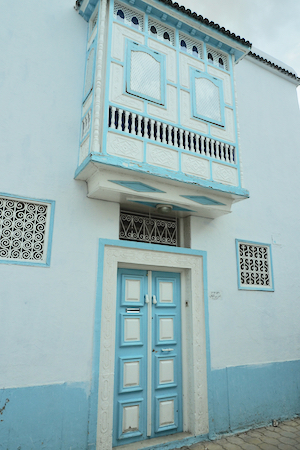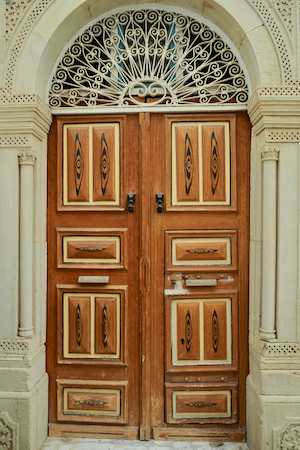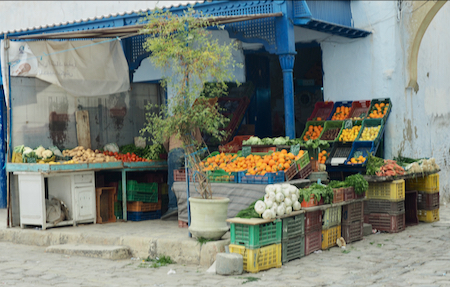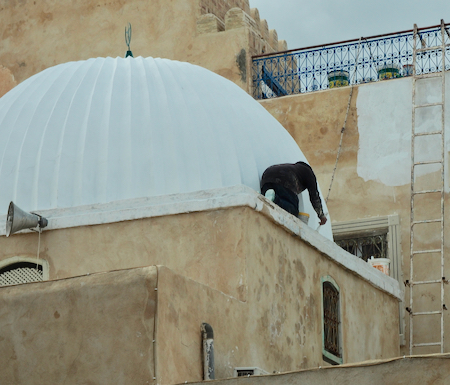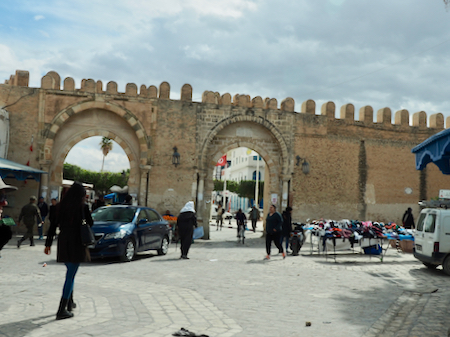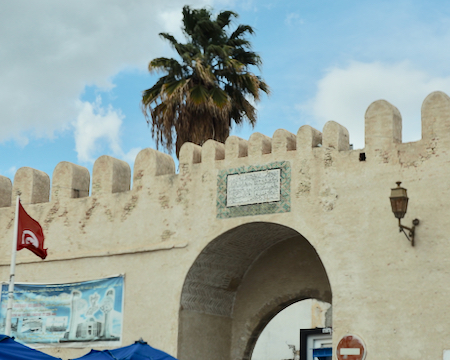Today's tours in Kairouan began at the Aghlabide Basins. In 692 CE the Arabs, who had settled here, brought water through underground aqueducts from the mountain springs many kilometers away. The water flowed into a smaller pool where sediments dropped to the bottom and cleaner water flowed into a very large pool where women came and used ropes and buckets to draw up water for their homes. The construction of the pools is unusual because of the “buttresses” inside the pool walls that reduce wave action that would stir up any sediment at the bottom. Buttresses outside helped support the pool wall and the weight of people leaning over it to draw water. Currently, the water level now is only 18 inches and swimming is not allowed.
Aghlabide Basins - outlet
Next we visited the mausoleum of Abou Zamaa al-Balawi, said to be a companion of the Prophet Mohammed. The tile work and carved “plaster” were beautiful.
Fancy tile work
Mausoleum of Abu Zamaa al-Balawi
Tiles in the Mausoleum of Abu Zamaa al-Balawi
Tiles in the Mausoleum of Abu Zamaa al-Balawi
Tiles in the Mausoleum of Abu Zamaa al-Balawi
Carved plaster
Carved plaster
Tiles on the outside of the Mausoleum of Abu Zamaa al-Balawi
The Grand Mosque of Kairouan was the first mosque built in Africa in the year 670 CE. Outside is a cemetery for imams from 1349 until today. The pillars in the courtyard and the prayer room are interesting - nothing matches among them - the lengths, bases, and capitals are all different and were all brought here from Carthage and reassembled.
There are seven cisterns in the courtyard that hold rain water collected for ablutions and an interesting sundial to tell when the calls to prayer should be made.
Grand Mosque of Kairouan
Grand Mosque of Kairouan
Capital - Grand Mosque of Kairouan
Doorway - Grand Mosque of Kairouan
Interior - Grand Mosque of Kairouan
Cistern - in the courtyard of the Grand Mosque of Kairouan
Sundial in the courtyard of the Grand Mosque
of Kairouan - it is unique because of the role
it plays in recording prayer times
(Link shows a close-up of the face of the sundial)
After visiting the Grand Mosque, we walked through part of the medina, mostly in the residential old city. We had to dodge many motor bikes but it was an interesting walk. Early in the tour, we stopped at a bread bakery where they let us watch their operation. We bought two round loaves, 10 inch diameter and 2 inches thick for 1/2 dinar or 15 cents! The government supplements the flour they use. The bread was hot out of the oven and delicious.
Map of the Medina of Kairouan
Street scene
Bags of flour at the bakery
Shaping the small breads
Weighing out the portions
Into the oven
Bread in the oven
Ready for sale
Street scene
A mashrabiya or mashrabiyya - a type of projecting oriel window enclosed with carved wood latticework located on the upper floors of a building
Beautiful door
Mashrabiya above a front door
Ornate doors
Vegetable market or stand in the neighborhood
Multiple street signs
Maintenance on the dome
City gate
Medina Gate
La Kasbah Hotel
Tonight was the Home Hosted dinner. We walked to an alley and into a large well appointed house. Mother and father (a wealthy copper and tin pot maker) live on the first floor and the two sons live in separate apartments on the second and third floors with their families. The sons spoke okay English and the two girls introduced themselves in English, but the children didn’t understand us when we tried to ask them questions. The two men were very interested in us as Americans. After dinner we signed a large map of the US on the place where we lived. It was a nice gesture.
| Return to Top | Return to Itinerary | Return to Trips page to view other trips | Return to Dreamcatcher Home Page |
